21.05.2020
It's the second mission of its kind this week and this time they made the trip in clear skies right over the most populated area on the west coast.
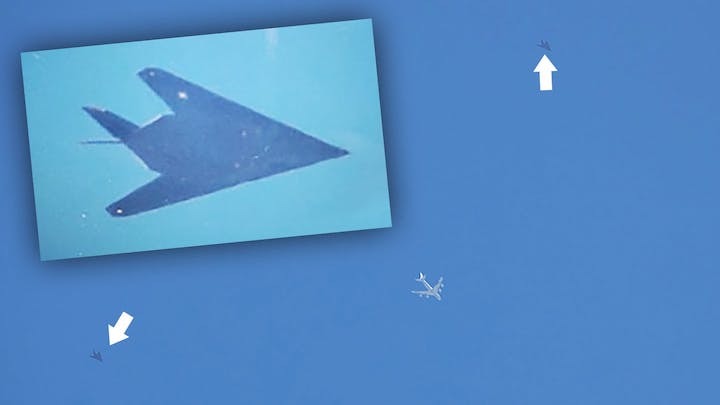
In a follow up to our reporting regarding Monday's flight of a pair of F-117s Nighthawk stealth jets, which were officially retired over a decade ago, off the Southern California coast, another similar mission has occurred today and this time we have photos showing the F-117s in tow behind their test tanker.
A ton of military aircraft activity has been underway around San Clemente Island, which the U.S. Navy controls. This includes private aggressor firms ATAC and Tactical Air Support Inc. flying their adversary jets, converted business jets and airliners that work as testbed aircraft for new sensors and communications, Omega Air private refueling tankers, as well as a number of Navy fighters and airborne early warning and control aircraft. The whole affair is occurring in conjunction with the Nimitz Carrier Strike Group's (CSG) Composite Unit Training Exercise (COMPUTEX), which is the most complex integrated training a carrier strike group undergoes before a deployment.
Added to this mix on Monday were a pair of F-117 Nighthawks that flew down to the warning areas off the SoCal coast with the help of Edwards AFB's KC-135 test tanker flying under the callsign GHOST27. The F-117s flew under their new staple "KNIGHT" callsign.
The F-117s stayed in the area a short while after being cleared in by a Navy E-2 Hawkeye. You can read the whole report of their radio communications in our past piece, but after a short while they headed back towards the Mojave Desert in tow behind GHOST27 before breaking off and heading to their home at the remote Tonopah Test Range Airport.
Now, two days later, they are at it again, but this time we have clear skies which resulted in some photos from our aviation photographer friends Ricky Scholand Christopher McGreevy.

F-117s in tow behind Edwards AFB's white and gray-colored test tanker.

A close up of one F-117 following behind the tanker as it cruised high over California.
The mission was anything but clandestine, with the F-117s in tow behind the tanker cruising directly over central Los Angeles and Long Beach in clear skies before heading out to sea. This is an unprecedented action by the usually very shy and officially retired Nighthawks. On Monday, they took a similar route, but it was above the cloud layer. The down-range activity also occurred a bit further south of where it happened on Monday, in an area commonly used by American carrier strike groups spinning up for deployment. It also looks as if the F-117s spent a bit more time playing with the assets in that area this time around.
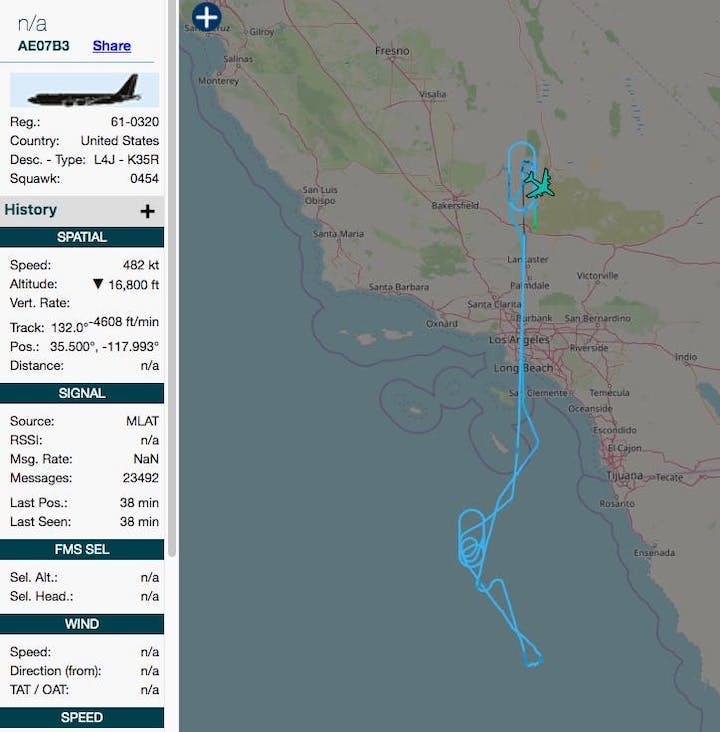
All this underscores the emerging reality that a handful of F-117s have taken on a low-observable (stealthy) aggressor role for both training and testing duties. Giving the Nimitz CSG the opportunity to test its skills and sensors against such a dissimilar and hard to detect target is clearly beneficial, especially as stealth aircraft and cruise missiles are beginning to proliferate around the globe.
You can read more of our analysis and background, as well as access our extensive back catalog on the saga of the F-117's ongoing operations here.
We will update this piece when more information comes available.
Quelle: TheDrive
+++
F-117 Nighthawk Stealth Jets Just Flew A Mission Off The Southern California Coast
12 years after their official retirement, a small number of F-117s are venturing farther from their home base to execute aggressor and test duties.
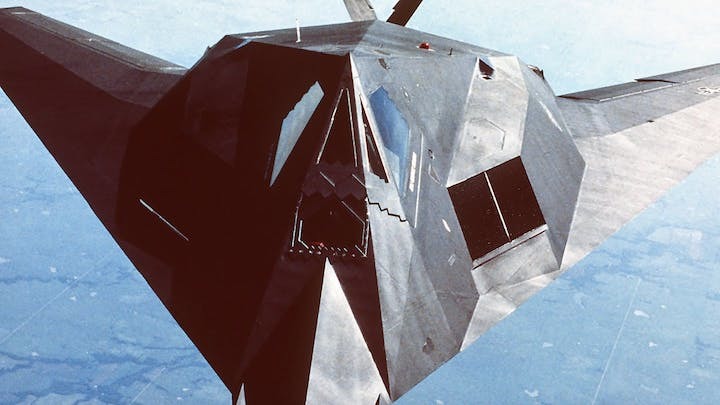
USAF-F-117
The F-117 Nighthawk was officially retired 12 years ago. A quiet period immediately followed, but within a few years, it became apparent that a handful of the stealth jets were still being flown. Since then, the increasingly active pocket force F-117 and has apparently taken on the low-observable (stealthy) aggressor role, at least to a limited degree, for training purposes, while also executing its secretive test and development support duties. These tasks have seen the still flyable F-117s stray increasingly from their home at the shadowy Tonopah Test Range Airport in desolate Southern Nevada. In recent years, they have been flying over the Mojave Desert, which has resulted in unique fanfare among the aviation enthusiast community. Now it is clear that they are flying missions out to sea, over America's vast range complexes off the Southern California coast.
Matthew P., a plane tracker and radio communications aficionado, picked up on the unique mission before getting the surprise that F-117s were indeed involved. Matthew tells The War Zone:
“At about 10:30am on May 18th, 2020, my scanners were running and I just happened to be looking at ADS-B when I noticed an Edwards-based NKC-135 heading south over the Angeles National Forest. It was not showing any callsign. Moments later, I heard some chatter on an air refueling frequency between three aircraft. The tanker being GHOST27and the receivers were KNIGHT01 and KNIGHT02.
The communications were just some basic chatter about intentions while they were in formation heading right over populated areas north of Los Angeles County. Initially, I had a feeling I was listening to the “retired” F-117s based off of previous sightings from other folks because they too used the callsign KNIGHT or LEHI. I had mixed thoughts because why would they fly F-117s right over one of the most populated cities and risk being seen? That is until I stepped outside and realized it was completely overcast. Sure enough, Satellite imagery showed much of Southern California was socked in at the time.
As they reached their work area over the ocean, it seemed they checked in with an E-2 Hawkeye callsign EAGLE31 while their tanker GHOST27 started a racetrack pattern for refueling. At this point, I still wasn’t sure for sure what I was hearing until GHOST and KNIGHT left the offshore W-291 range heading northbound back to the R-2508 complex, and then it became dead obvious who KNIGHT was. Their tanker GHOST27 handed them weather for Tonopah Test Range and it sounded like the winds were debatable out there and they might have to attempt to land and divert to Edwards AFB if they couldn't make it down.
Overall this was pretty interesting to say the very least and it’s something I don’t think I’ll ever forget.”
It isn't clear exactly what the F-117s were doing out there, but the E-2D Hawkeye is the most advanced airborne early warning and control (AEW&C) platform in the world. It has amazing capabilities, which include the ability to detect and track aircraft with small radar cross-sections and to fuse radar data from various ships and aircraft and rebroadcast that information. As such, testing and validating the E-2D's systems against the F-117s would be highly beneficial, as would training against it.
Navy Super Hornets directed by the Hawkeye, as well as naval ships toting extremely powerful radar systems, could also put their sensors, data-links, and training to work cooperatively against such an elusive target. Interestingly, the Nimitz Carrier Strike Group is out there right now executing a COMPUTEX (Composite Training Unit Exercise). It's the most challenging integrated training evolution a carrier strike group undertakes before a deployment. All this together adds more to the evidence that these aircraft are flying at least partially in the adversary support role now.
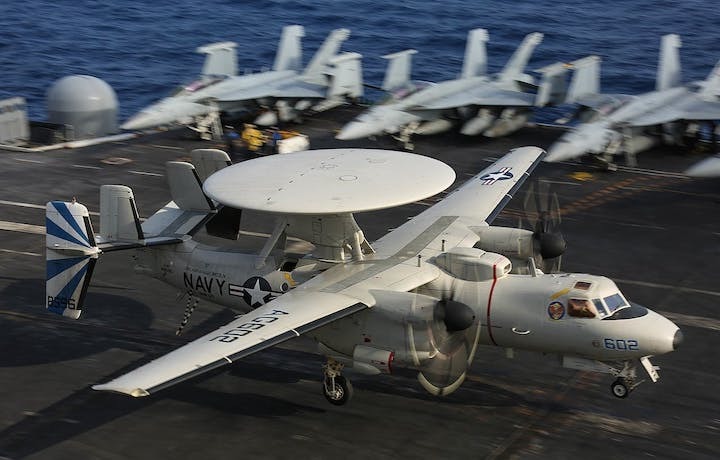
E-2D
On the test and tactics development end, most notably, Navy Super Hornets will soon receive infra-red search and track (IRST) sensors that are uniquely suited for spotting stealthy aircraft. That system is currently in testing. We have long speculated that the F-117s are being used to test very similar IRST systems currently being developed by the Air Force. So, it makes sense that they would do the same for the Navy.
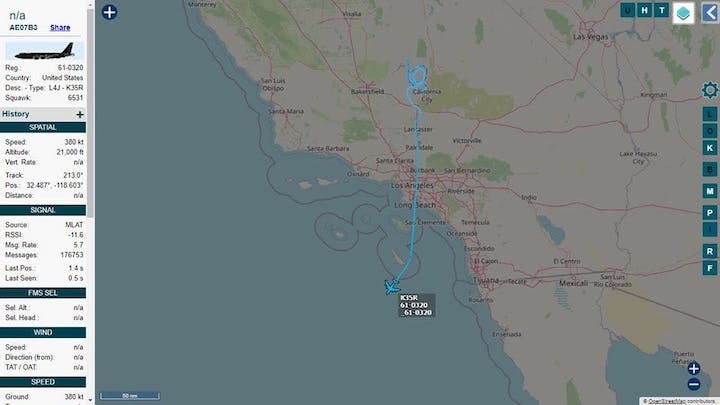
The Navy has cutting-edge sensors on San Clemente Island that are used for range control and development. Testing them against the F-117 could also be valuable. Individual Navys ships work in the area around the island, as well. They could also benefit from the F-117's unique radar signature.
With all this in mind, there are plenty of reasons for the F-117s to go play with the Navy off the SoCal coast with a test tanker nearby.
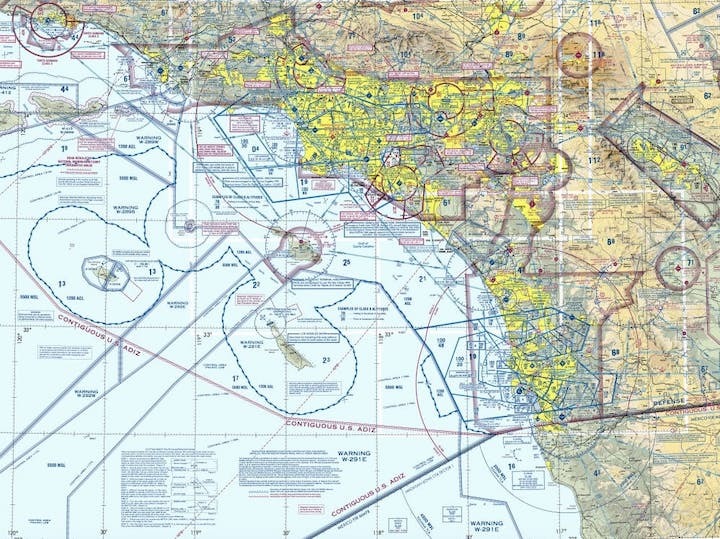
A look at the airspace off Southern California, including the W-291E range that surrounds the Navy's testing facilities on San Clemente Island.
Even as the vast majority of the roughly 50 "Black Jets" that still exist sit partially disassembled in the same hangars that they occupied during their top secret operational years the better part of four decades ago, it's amazing to think that a few of their stablemates are out there playing the bad guy against America's front-line weapon systems so long after their introduction to service and their subsequent retirement. Eventually, the F-35 will enter into the adversary support role, but still it won't have the reduced infrared signature that its predecessor had, nor the same unique stealth characteristics.
As it sits now, the F-117s are still mandated by law to be destroyed over the current decade, with less than a quarter of the remaining jets slated to go to museums. So, while the end seems to be finally on the horizon for the elusive Nighthawk, clearly, they are literally not going out without a fight.
Quelle: TheWarZone
